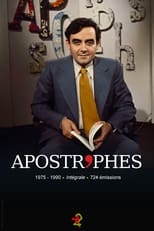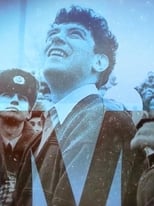Vladimir Bukovsky
¿Quién es Vladimir Bukovsky?
After being expelled from the Soviet Union in late 1976, Bukovsky remained in vocal opposition to the Soviet system and the shortcomings of its successor regimes in Russia. An activist, a writer, and a neurophysiologist, he is celebrated for his part in the campaign to expose and halt the political abuse of psychiatry in the Soviet Union.
A member of the international advisory council of the Victims of Communism Memorial Foundation, a director of the Gratitude Fund (set up in 1998 to commemorate and support former dissidents), and a member of the International Council of the New York City-based Human Rights Foundation, Bukovsky was a Senior Fellow of the Cato Institute in Washington, D.C.
In 2001, Vladimir Bukovsky received the Truman-Reagan Medal of Freedom, awarded annually since 1993 by the Victims of Communism Memorial Foundation.
In 2015 he was prosecuted in the United Kingdom on the charge of possession of child pornography, but became ill and died before the case went to trial.
Vladimir Bukovsky was born to Russian parents in the town of Belebey in the Bashkir Autonomous Soviet Socialist Republic (today the Republic of Bashkortostan in the Russian Federation), to which his family was evacuated during World War II. After the war he and his parents returned to Moscow where his father Konstantin (1908–1976) was a well-known Soviet journalist. During his last year at school Vladimir was expelled for creating and editing an unauthorised magazine. To meet the requirements to apply for a university place he completed his secondary education at evening classes. Bukovsky was enrolled at Moscow State University for biology but was kicked out at age 19, having criticised the Komsomol, i.e., the Young Communist League.
In September 1960, Bukovsky entered Moscow University to study biology. There he and some friends decided to revive the informal Mayakovsky Square poetry readings which began after a statue to the poet was unveiled in central Moscow in 1958. They made contact with earlier participants of the readings such as Vladimir Osipov, the editor of Boomerang (1960), and Yuri Galanskov who issued the Phoenix (1961), two examples of literary samizdat.
It was then that the 19-year-old Bukovsky wrote his critical notes on the Communist Youth League or Komsomol. Later, this text was given the title "Theses on the Collapse of the Komsomol" by the KGB. Bukovsky portrayed the USSR as an "illegal society" facing an acute ideological crisis. The Komsomol was "moribund", he asserted, having lost both moral and spiritual authority, and he called for its democratisation. This text, and his other activities, brought Bukovsky to the attention of the authorities. He was interrogated twice before being thrown out of the university in autumn 1961. ...
Source: Article "Vladimir Bukovsky" from Wikipedia in English, licensed under CC-BY-SA 3.0.
Trabajos destacados
Géneros más habituales en las películas de Vladimir Bukovsky
Géneros más habituales en las series de Vladimir Bukovsky
Compañeros de trabajo recientes de Vladimir Bukovsky
Las imágenes y retratos de actores y actrices mostrados en este sitio web son obtenidos de la base de datos pública de The Movie Database (TMDb), utilizada bajo los términos y condiciones de dicha plataforma. En caso de que alguna imagen o fotografía sea incorrecta, ofensiva, o pueda infringir derechos de imagen o copyright, puede ser editada o eliminada directamente en TMDb. Esto provocará su eliminación automática en este sitio web. Adicionalmente, si usted desea solicitar la eliminación de una imagen directamente en nuestro sitio web, puede utilizar el formulario de contacto ubicado al pie de la página. Atenderemos su solicitud de manera expedita y tomaremos las medidas necesarias para garantizar el cumplimiento de los derechos aplicables.
The images and portraits of actors and actresses displayed on this website are sourced from the public database The Movie Database (TMDb), used in accordance with its terms and conditions. If any image or photograph is incorrect, offensive, or may infringe image rights or copyright, it can be edited or removed directly on TMDb. This will automatically result in its removal from this website. Additionally, if you wish to request the removal of an image directly from our website, you may use the contact form located at the bottom of the page. We will promptly address your request and take the necessary measures to ensure compliance with applicable rights.


